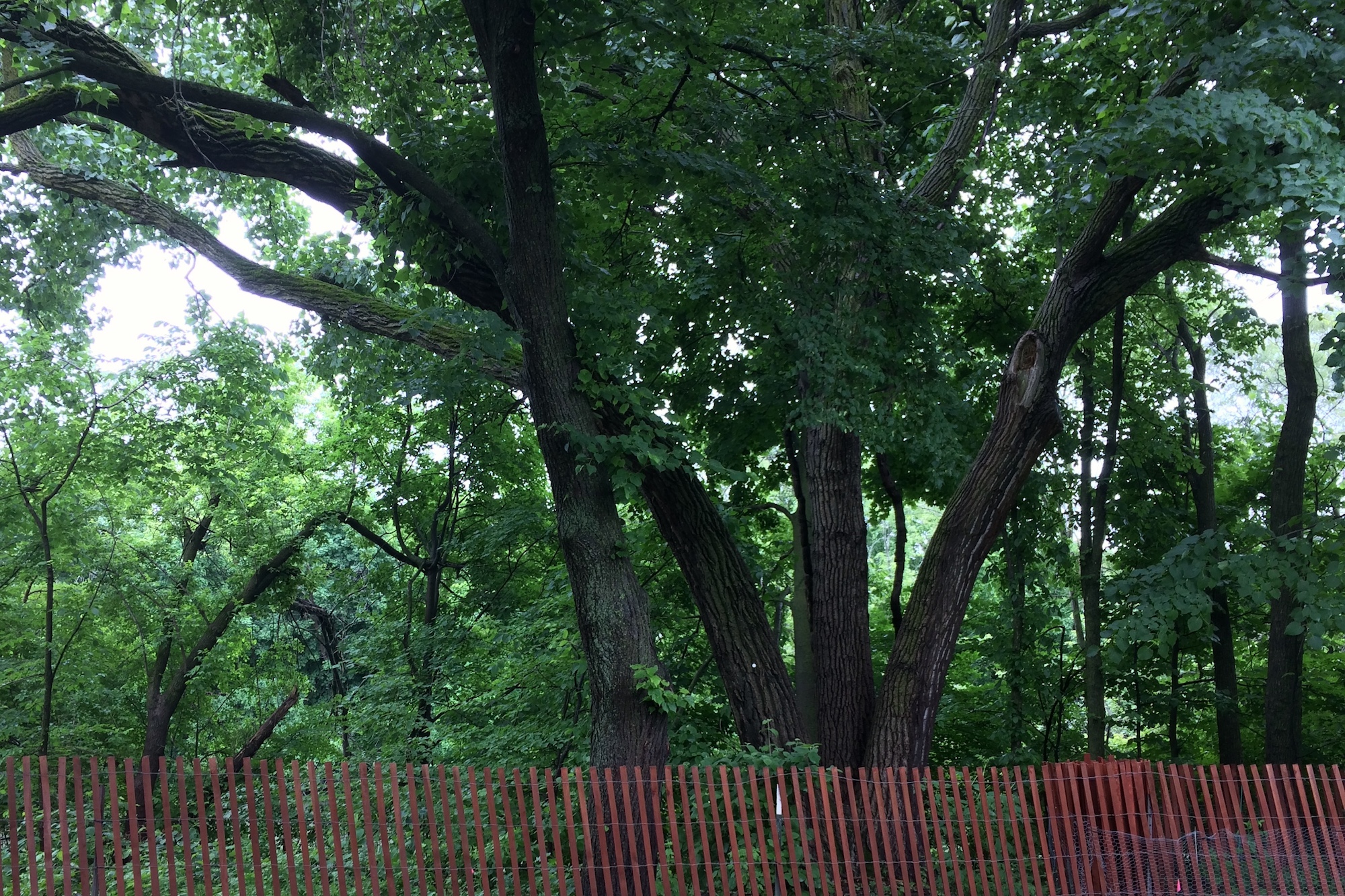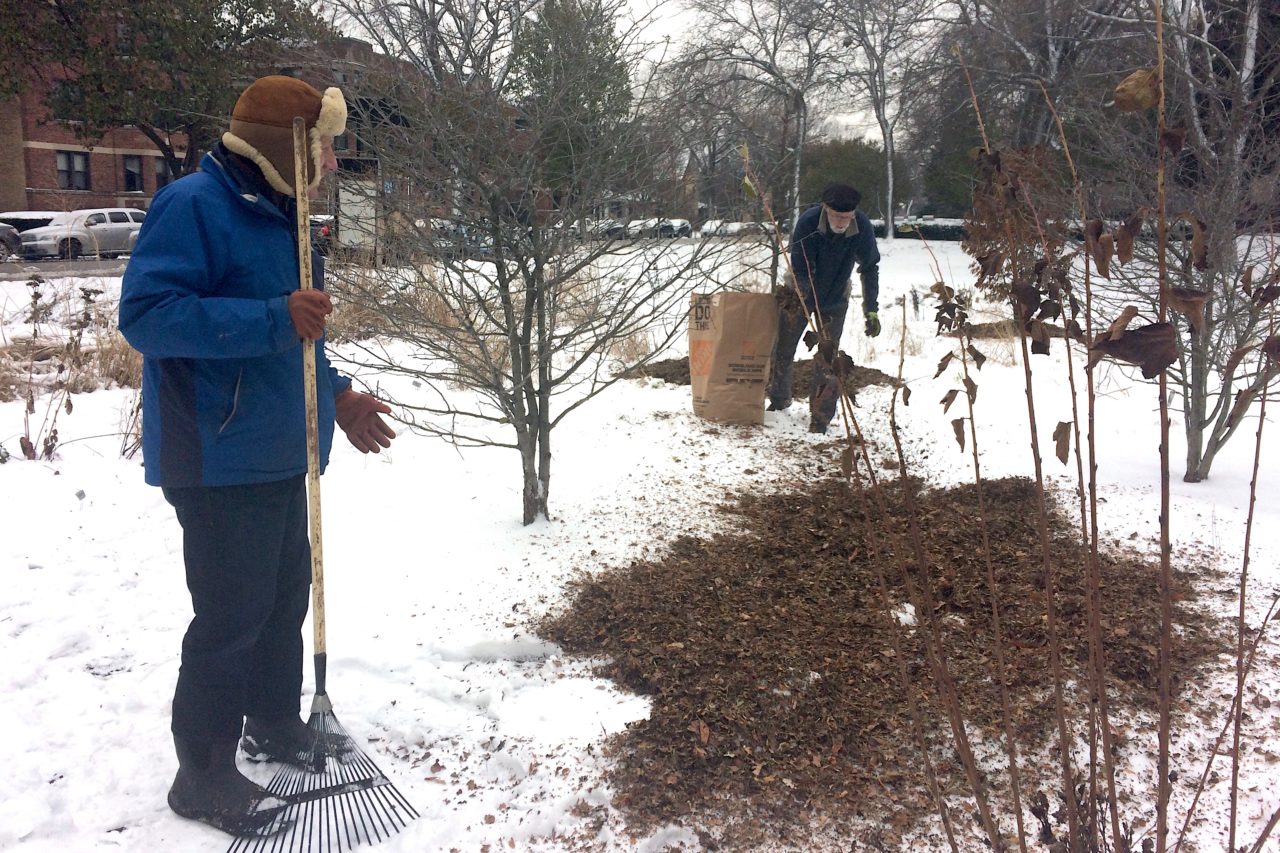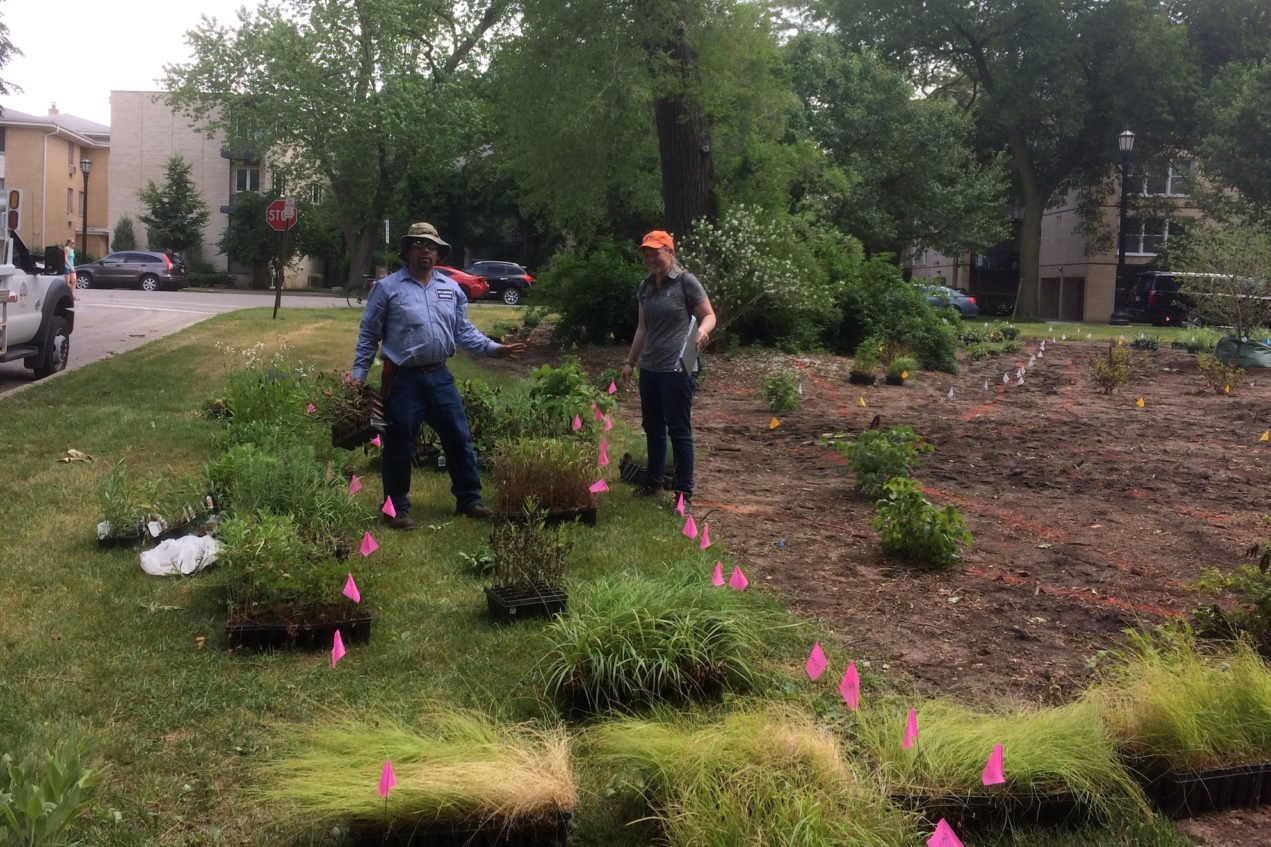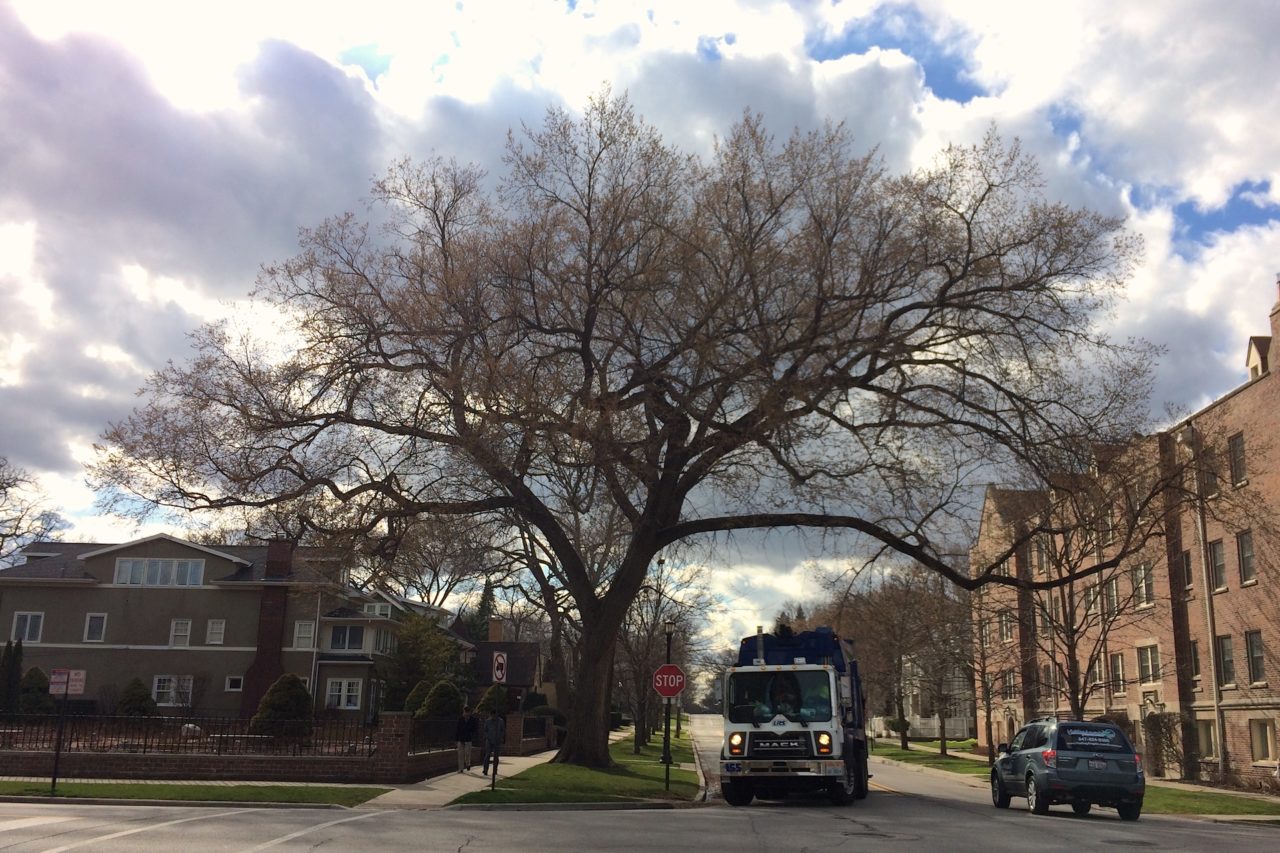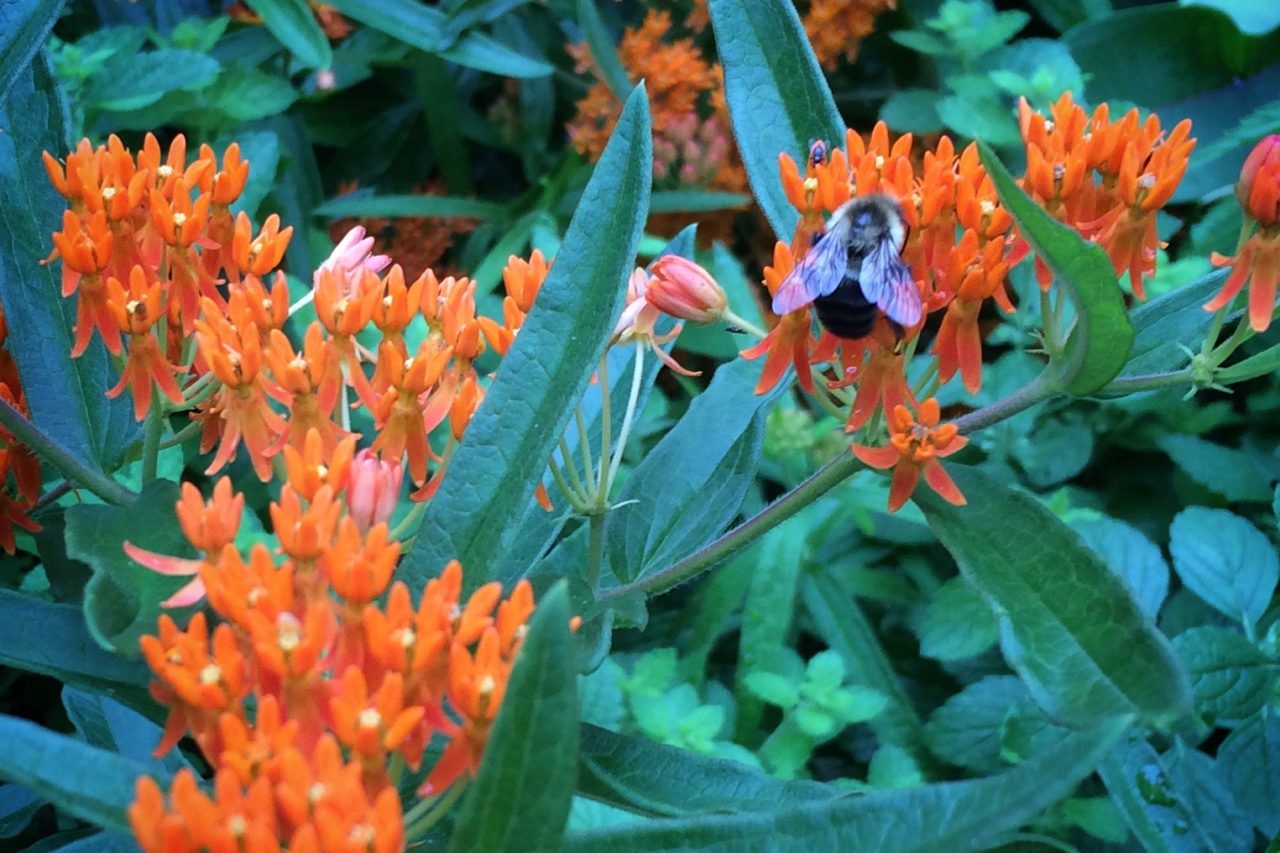By mid-summer, tall trees cast cooling shade along the channel-side path through the Ladd Arboretum. Frequent visitors will recognize the big cottonwood that’s just beyond the Ecology Center. Cottonwoods favor damp areas and streamsides so they are often found growing along the North Shore Channel.
In our work to establish bird-friendly native habitat along sections of the channel, we’ve been guided by a 2004 report about migrant bird habitat in the Chicago region, which underscores the importance of wooded streamside areas like this. Layered vegetation—from tall canopy trees to smaller trees and shrubs and ground-level plants—is especially important, the report explains: “The different layers attract a variety of species, and are used in different ways depending on weather conditions. Having the layers in close proximity allows the birds to move between layers easily.”
Fortunately, a number of tall locally native trees already were growing along the channel as we began the project, so we have been able to clear and replant around them. Oaks are especially valuable for birds during spring migration because they are used by hundreds of species of moth and butterfly larvae, to the birds have plenty of caterpillars to feed on. Other favorites of spring migrants that are found along this path are elms, hawthorns, and hackberries.
Trees also have demonstrated value for people. If you know the species and diameter of a tree, you can use a simple calculator developed by the U.S. Forest Service to estimate how much carbon it sequesters and how much rainfall it intercepts.
This 4-page guide lists some of the trees native to Illinois that you might notice as you walk along the path leading from the Ecology Center northeast to just beyond the Grady Bird Sanctuary.
Native Trees of the Ladd Arboretum July 2018 Compressed
— Wendy Pollock
